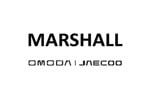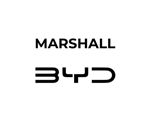October, which normally sees a decline in used values in reaction to September’s plate lift, actually shows a rise of 0.3%. This is a result of an unusually buoyant market for the time of year.
The negative seasonal movement into December is also lower than it has been historically. The average overall drop for the vehicles analysed is 1.2%. The equivalent dip at the same point last year was nearer to 3%.
December demand strengthens
One major factor underlying this change is that once predictable seasonal trends are now far less pronounced. Retail demand into December has been far stronger than previous years, which has been underpinned by later stock purchase by retailers.
Whereas previously retailers may have been keen to clear stock and liquidate cash flow over the end-of-year lull, December is now generally considered to be more of a usual trading month than it was historically.
This increased stock purchase by retailers and increased buying activity serves to level the marketplace, as reflected by the small price movements into December 2006 compared to last year.
Data for the full-year AM Index – taken from a market-representative basket of 85 cars from all sectors at three years/30,000 miles – follows a fairly typical pattern, with steady depreciation being offset by the effects of plate change uplifts in March and September.
Supermini performance
Strong market performance in March saw the average three-year/30,000 mile value within the supermini sector rise by a far higher margin than the market as a whole.
However, by September the situation had changed; the sector growing by just 3.6% compared with a basket average of 5%. This drop in performance was influenced by a decline in the value of petrol models compared with diesel.
For example, the Ford Fiesta petrol range was lowered by 1% in September, while diesels were raised by 2%.
Similarly, all Nissan Micra petrol derivatives saw price drops of 2%, with their diesel equivalents remaining level. It’s the same with Fiat Punto models: diesels up 1% whereas petrols remained level.
#AM_ART_SPLIT# Diesel premium increases
In pound-note terms the premium of diesel over petrol, in terms of three-year-old used cars, last year increased from £333 in January to £454 in December.
These movements indicate that the positive perception of diesel cars within larger sectors is now filtering down into the supermini sector.
This is possibly because many drivers are now downsizing from lower medium vehicles into supermini, and any preference they had for diesel engines will now be brought into the smaller sector.
It is also likely that increased awareness of fuel economy and tax legislation has resulted in existing petrol drivers making the switch.
In addition, the increasing size of superminis makes the sector a far more desirable used proposition for buyers looking to accommodate passengers.
Looking at individual brands, Ford Fiesta was unchanged in value when comparing a three-year-old car with 60,000 miles in December 2006 and an identical age and mileage example a year previously.
Seat Ibiza achieved a rise of almost 10%. Peugeot 206 turned in an 8% increase, despite its aging profile compared with the rest of the sector available at three years old.
The Vauxhall Corsa made an impressive showing and the relative differences between old rivals Fiesta and Corsa suggests that, in this sector, increasing success for Vauxhall has stemmed from specifically capturing a young following, meaning its offering has the broadest generational appeal.
Against a background of normal lifecycle depreciation – the process of a car’s natural reduction in value as it ages in design terms – generally accounting for around 5% depreciation over 12 months, the strength of many cars in this sector is remarkable.
#AM_ART_SPLIT#
Overall average: three-year/30, 000 miles used values

Supermini average: three-year/30, 000 miles used values













Login to comment
Comments
No comments have been made yet.